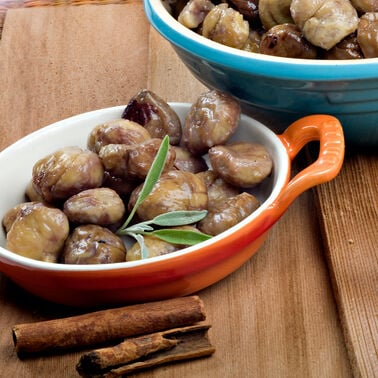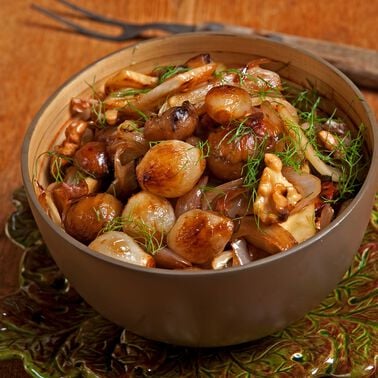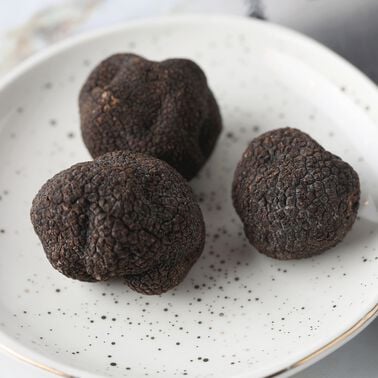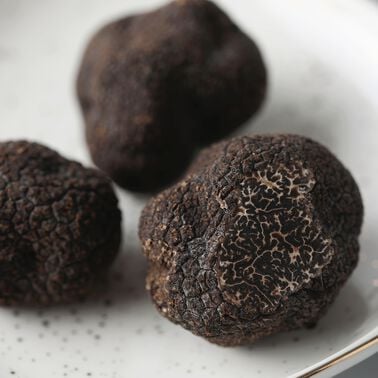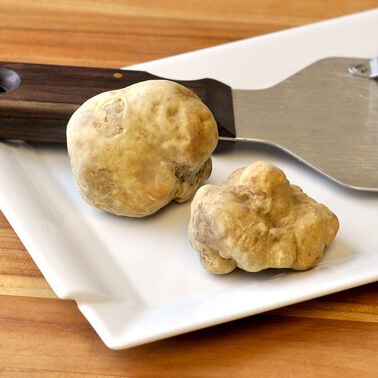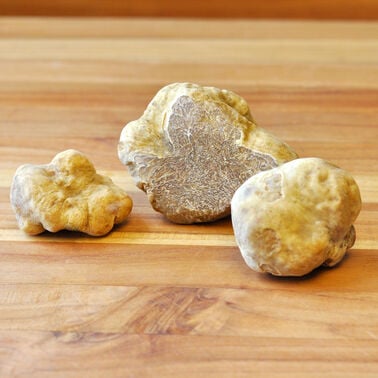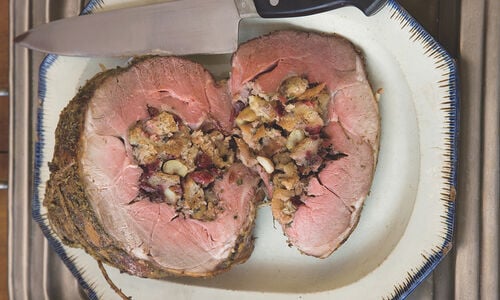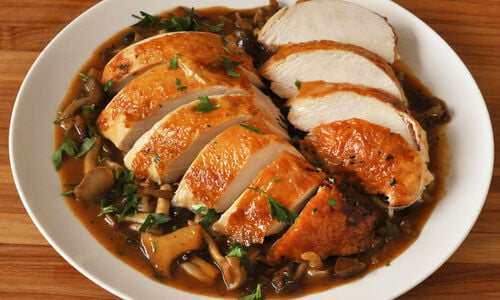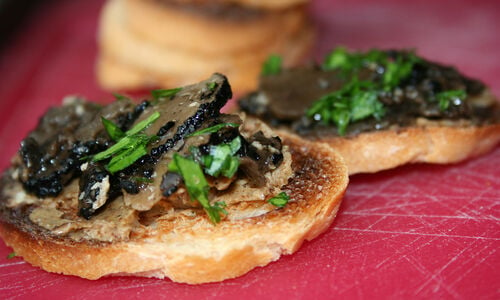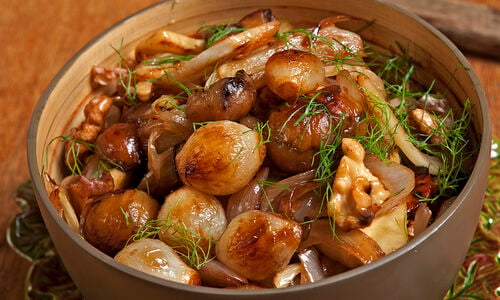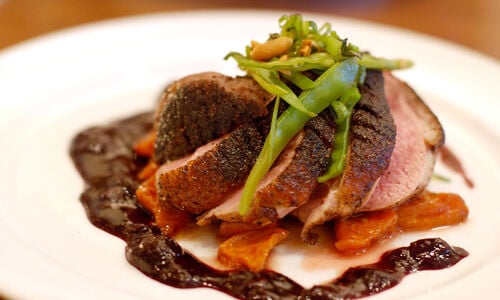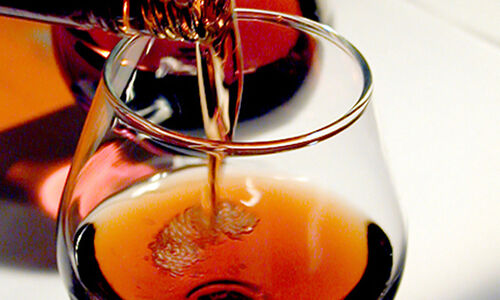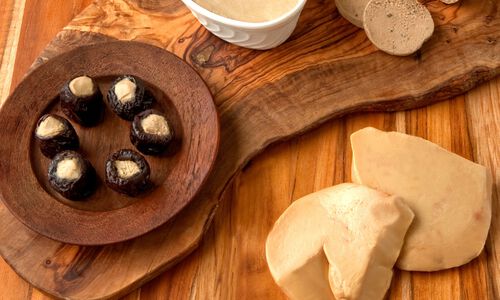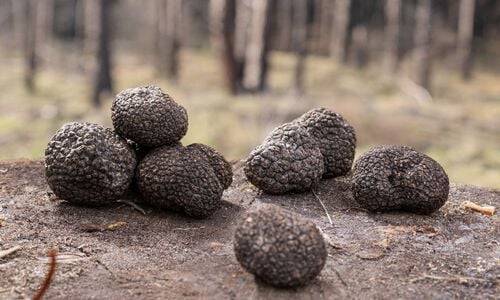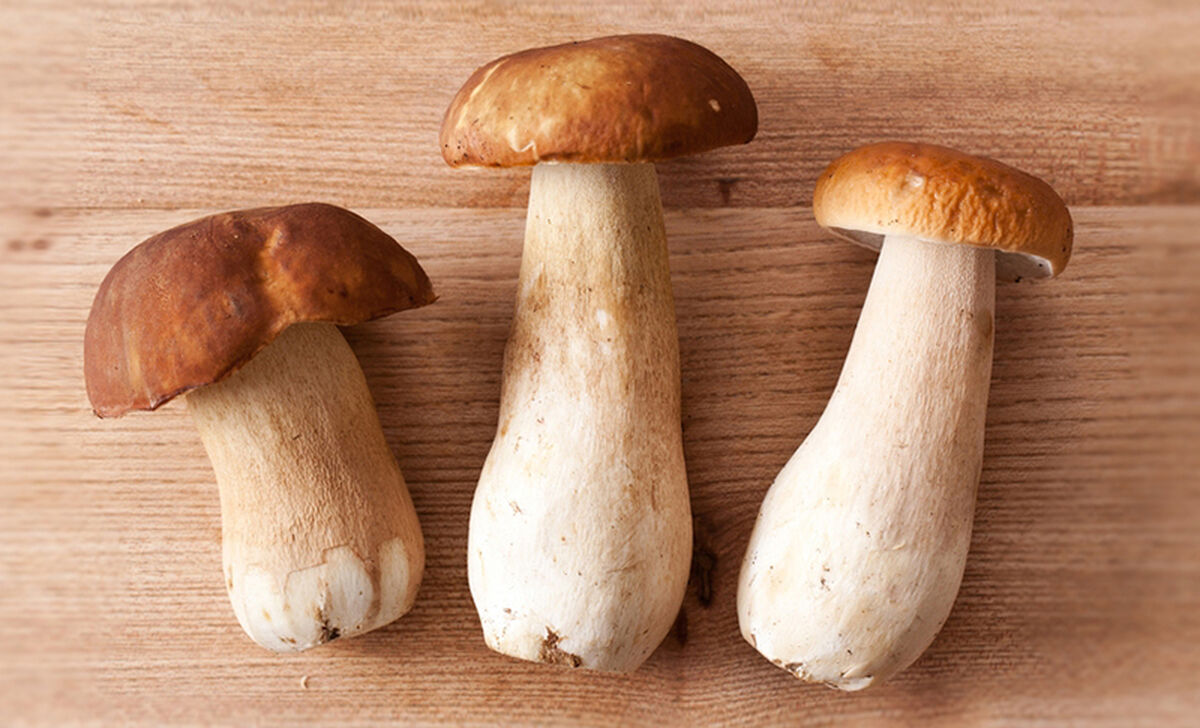
The King of Mushrooms: The Cèpe
The Southwest of France has a bounty of tastes to be foraged, but the cèpe is arguably the favorite wild mushroom of the region. The name cèpe, perhaps better known as porcini in Italian comes from the Gascon word “cep” meaning “trunk,” referring to its fat stem. The Boletus edulis, to use the Latin name, is so esteemed in the Southwest of France that real estate listings often state that cèpes can be found on the property, increasing the value of the land.
Cèpes are gathered in autumn, in the wild, but never cultivated, because the complex and symbiotic relationship between the mushroom and the tree roots is hard to reproduce. This meaty, intense mushroom boasts a woodsy, nutty taste, and is sometimes called the king of mushrooms. The cèpe is delicate in flavor but vigorous enough in body to be used in brown sauces and will stand up to strong flavors like grilled steak. The cap and stem of this mushroom are equally tasty, but the texture of the stem is slightly tougher than the cap. Cook the stems slowly, in soups or braises, but sauté the caps in duck fat, like they would do in Gascony - or butter. In the Southwest, they prefer to cook cèpes long and slow to bring out their woodsy flavor.
Cèpe-scented oil is one way to preserve the flavor of the season, and it can be made by soaking dried cèpes in good quality French olive oil for at least a month. Dried cèpes are available year-round and can be rehydrated to give any dish the deep, unmistakable flavor of the king of mushrooms: the cèpe.
Chestnuts from the "Bread Tree"
Chestnut trees have been in the Southwest of France since prehistoric times. Perhaps they like the weather and soil there. After a hot August and a wet September, a bumper crop of chestnuts can be expected in October.
In the past, the chestnut was the center of life in small villages in the Southwest, where families would gather to peel the prickly shells off the nuts while telling stories and exchanging gossip. Poor populations living on rocky land inhospitable to grains depended on chestnuts completely, and a bad crop could bring ruin.
Chestnuts were ground into flour used to bake bread, which is how it earned the nickname of l'arbre à pain, or “bread tree.” Chestnut flour is still the basis for some cakes and other sweets in France. And although the number of trees has declined, due to disease and to the relentless march of modern agriculture, the chestnut is still used and revered in the Southwest.
Whether freshly roasted over a fire, pureed into a creamy soup, braised with pork or duck, or paired with bacon and Brussels sprouts, the chestnut finds a way into many dishes typical of the region, especially in dressing (or stuffing) for a goose or other poultry, and always served at the holidays. French chestnuts can be purchased fully cooked in vacuum-sealed packages.
The Treasure of Truffles
Ah, truffles. They have mystified and inspired mankind for centuries. What is it about these tubers that can command fortunes? What’s all the fuss about?
The truffle is an irregular, modest, and lumpy little tuber that grows underground on the roots of living trees such as oak, hazel, chestnut, or beech, and ranges in size from a walnut to a golf ball, weighing an average of 2 ounces, though larger truffles have been found. Occasionally a truly huge truffle will be discovered and the international intrigue will begin, with photo opportunities and an auction to follow. The rarity of such a truffle always makes the news, when a buyer comes forth with a lot of cash to lay claim to the treasure.
Tuber melanosporum, known as the black winter, or Périgord truffle, is named after the region in France where it most commonly grows (though it does grow in Italy and Spain). Found from late autumn all the way through February, the black winter truffle is the most sought-after type of truffle, and the prices will reflect that. Weather is a huge factor in the development of the truffle, so availability and quality will vary depending on the region’s weather.
Called the “diamond of the kitchen” by the 18th-century French gastronome Brillat-Savarin, the truffle has an earthy, strong flavor and an incomparable aroma. Truffles are nearly impossible to describe - their smell and flavor are intoxicating and all-encompassing. Their flavor enhances everything it touches, and simply storing a truffle with eggs will impregnate the eggs with a subtle truffle taste. In France, you black truffles paired with foie gras, studding pâtés and mousses, in poultry stuffing, even under the skin of a capon. As with any other limited seasonal food item, truffles are found preserved in butter, oil, vinegar, and even whole or sliced in cans. In this manner, black truffles can be enjoyed throughout the year, and by those who do not have the pocketbook of a king.
